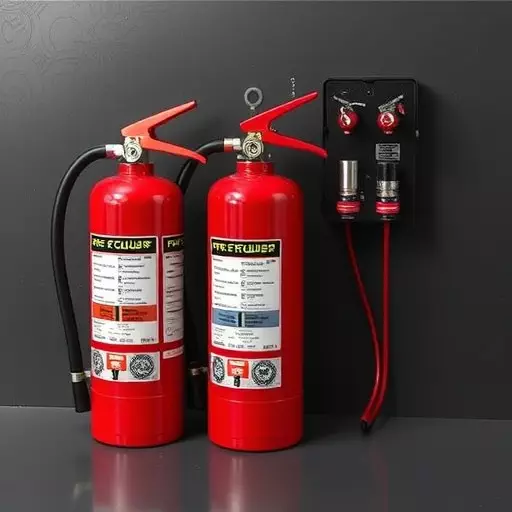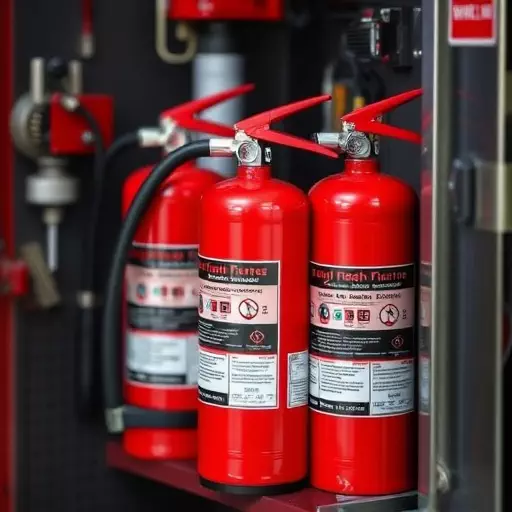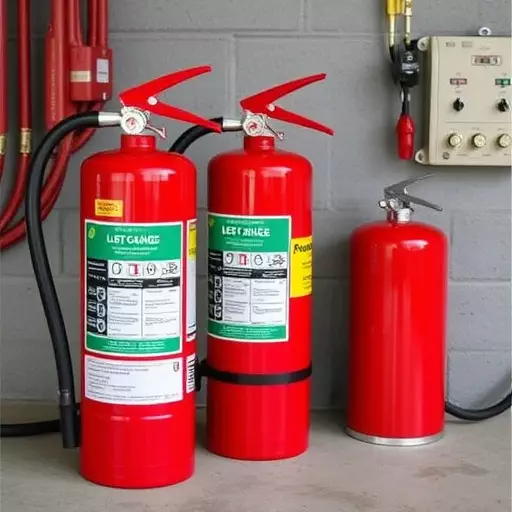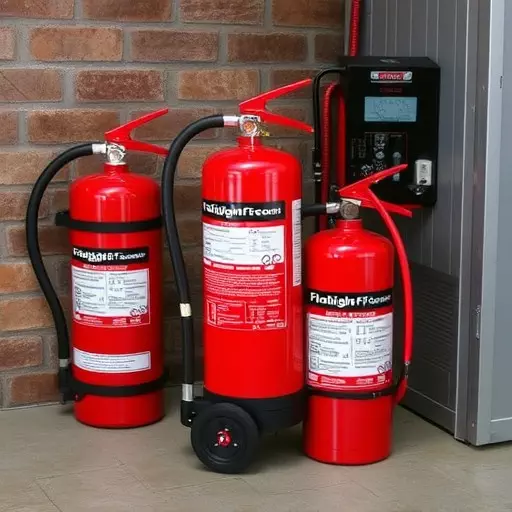The fire extinguisher recharge process in Fayetteville is crucial for maintaining safety. Portable extinguishers require recharging every 1-3 years and thorough inspections to ensure functionality. CO2 extinguishers, with longer recharge cycles of 5-6 years, need specialized refilling of carbon dioxide to maintain optimal pressure and effectiveness. Local regulations dictate specific intervals, and trained professionals follow strict standards for all types, ensuring Fayetteville's safety through immediate fire suppression.
“Fire extinguishers are essential safety tools, but proper maintenance, including regular recharge intervals, is crucial. This article guides you through the critical aspects of understanding and maintaining your fire extinguishers. We delve into the fire extinguisher recharge process in Fayetteville, exploring the differences between portable and CO2 models and providing insights for each to ensure maximum effectiveness. By understanding these considerations, you can stay prepared and enhance safety measures.”
- Understanding Fire Extinguisher Recharge Intervals
- The Fire Extinguisher Recharge Process in Fayetteville
- Portable vs CO2 Fire Extinguishers: Recharge Considerations
Understanding Fire Extinguisher Recharge Intervals

Understanding Fire Extinguisher Recharge Intervals is essential for maintaining optimal safety in any facility. The recharge process for fire extinguishers varies depending on their type, with CO2 fire extinguishers typically requiring recharge every 5 years and portable fire extinguishers needing periodic maintenance. In Fayetteville, local regulations often dictate specific intervals for recharging these vital safety devices.
The portable fire extinguisher recharge process involves inspecting the extinguisher for any damage or corrosion and ensuring all parts are in working order. CO2 fire extinguishers, on the other hand, require a more precise recharge method where the carbon dioxide is refilled to the appropriate pressure level, usually every 5 years, to guarantee their effectiveness in case of an emergency. Regular maintenance and understanding these recharge intervals are crucial for businesses and homeowners alike to ensure they are prepared for any fire-related situations.
The Fire Extinguisher Recharge Process in Fayetteville

In Fayetteville, the fire extinguisher recharge process is a critical aspect of fire safety management. It involves a series of meticulous steps to ensure that portable fire extinguishers are always ready for immediate use in case of an emergency. The process starts with an inspection to evaluate the condition of the extinguisher, including checking its pressure level and overall functionality. For CO2 fire extinguishers, a common type found in many commercial settings, technicians expertly recharge them by filling them with compressed carbon dioxide gas, adhering to strict safety standards.
This recharge process is not limited to traditional models; it also includes portable fire extinguishers of various types, each requiring specific handling. Specialized equipment and trained professionals are employed to perform this task, guaranteeing that the recharge meets industry regulations. Whether it’s a quick top-up or a complete refurbishment, the goal is clear: to keep Fayetteville safe by ensuring that fire extinguishers are always at the ready, ready to suppress fires in their early stages, potentially saving lives and property.
Portable vs CO2 Fire Extinguishers: Recharge Considerations

In terms of fire extinguisher recharge intervals, there are distinct considerations for portable and CO2 models. Portable fire extinguishers, often used in residential or small commercial settings, typically require recharging every 1-3 years, depending on usage frequency and local regulations in Fayetteville. This relatively shorter cycle is due to the high pressure and compressed gas they use, which can deplete faster in environments with frequent discharge or harsh conditions.
On the other hand, CO2 (carbon dioxide) fire extinguishers, commonly found in larger spaces like industrial facilities or public buildings, have longer recharge intervals—often every 5-6 years. This is because CO2 extinguisher recharge process involves replenishing the carbon dioxide itself, rather than just refilling a container with compressed gas. The slow release rate of CO2 and its non-conducive properties for combustion make it suitable for larger areas, thereby extending the recharge cycle.


